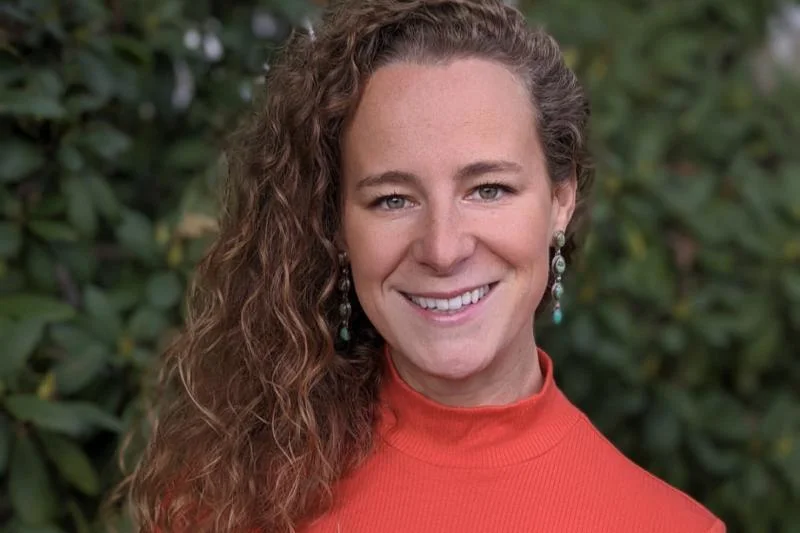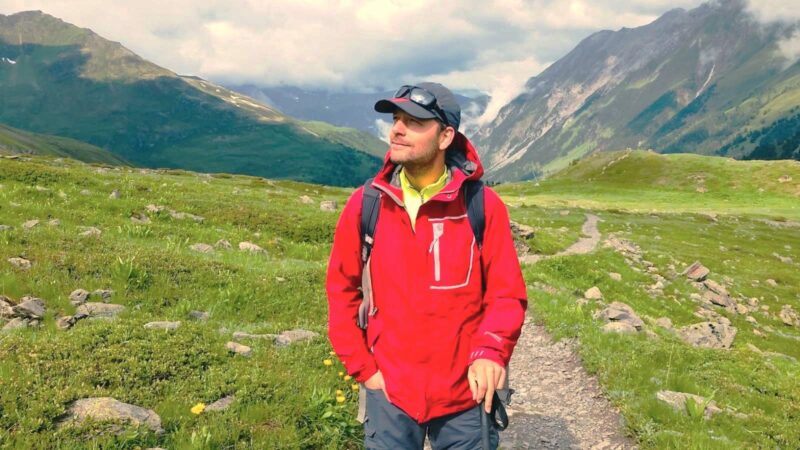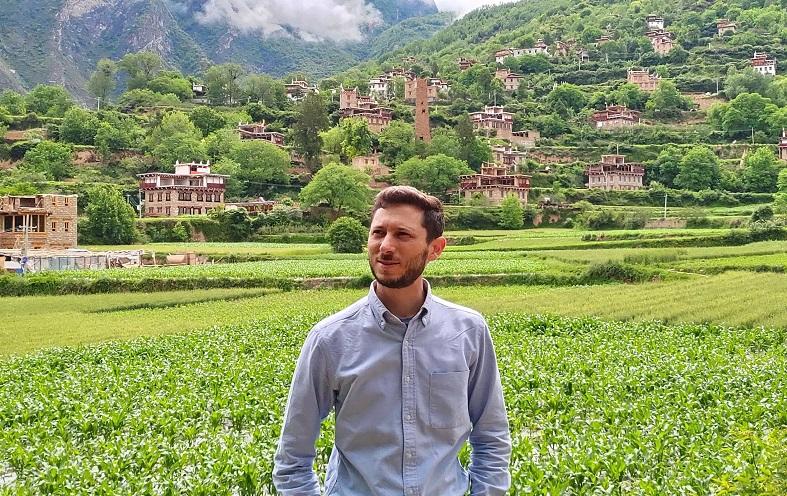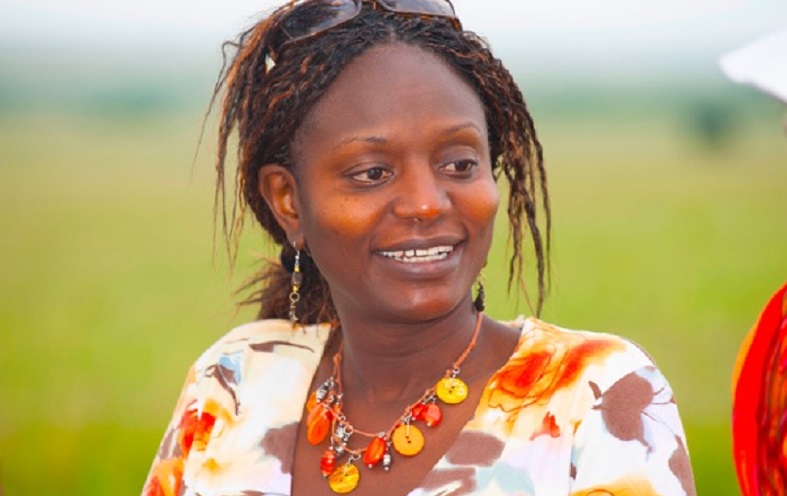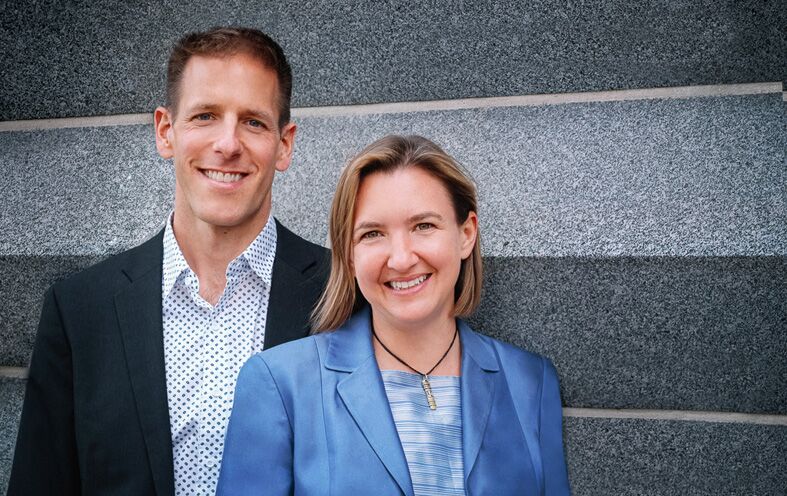
From travel bloggers during the early days of the social media boom to sought-after tourism development advisors – Audrey Scott and her partner Daniel Noll have come a long way. Having together developed Uncornered Market, this power duo of responsible travel advocates is helping the tourism industry to become a force for good.
In this interview, Audrey discusses the need for businesses to be commercially successful, all the while maintaining sustainable development as their core strength. She also talks about the standstill caused by the coronavirus pandemic and how this crisis is providing a much-needed kickstart for destinations to switch to a more sustainable form of tourism, where the needs of the environment and local residents are prioritized over insufficient tourism success metrics such as arrival numbers.
Audrey, together with your partner Daniel you advise tourism businesses and destinations on sustainability. Do you remember what first got you interested in sustainable tourism?
Oddly enough, we didn’t really encounter the phrase “sustainable tourism” until a few years into our work and the around-the-world journey that evolved into Uncornered Market.
At the end of 2006, we set off on a creative sabbatical to travel around the world, at a time when travel blogs were a novelty and social media barely existed. Our goal was to tell the stories of people and places that we felt didn’t have a voice, so as to break down fears and stereotypes and to humanize the places we visited. We articulated and advocated for travel grounded in respect – for local people and culture, socio-economy, and the environment. We believed that travel could enrich travellers just as it benefitted the people and communities they encountered. And to us, those multiple layers of respect are what underpin sustainable tourism.
A few years in, a board member from the Global Sustainable Tourism Council (GSTC) reached out to engage us in a communications and social media project, characterizing our work and advocacy as sustainable tourism, noting that the art of our work was that we didn’t use the term “sustainable tourism.” We just lived it, experienced it, articulated it, and advocated for it.
We found many organizations, travel companies and destinations doing impactful work – yet unable to articulate what made them different, bogging down in technical terminology and certifications, and losing the through-line of why travellers ought to care about sustainability. In other words, how they could make decisions in line with their values and have a positive impact on their travels that they wanted.
For clients and our work with them, the implications were not only in marketing, communications, and storytelling but also upstream in product development, operations, and strategy.
As tourism development strategists, what areas do you specialize in? What approaches or models define your work?
We specialize in destination strategies, tourism product development, and sustainability marketing, applying this model of the three layers of positive impact between communities, travel industry, and travel consumers. We first presented this model at the WTTC Global Summit in Sevilla last year (2019) together with Tourism Cares, to illustrate how tour companies could integrate purpose directly into their product development. The model also serves to articulate the essence of our work in tourism development.
Our work is community-driven. We ask a lot of questions, engage local stakeholders across the spectrum. We bring to surface all the raw materials of a destination – culture, cuisine, history, nature, architecture, and essence – much of which may be hidden or poorly articulated before we arrived. These characteristics are often either taken for granted or at the other extreme, overstated with respect to their importance in the traveller experience.
Then, we facilitate, helping clients and destinations balance it all in the creation, positioning, and delivery of experiences. Our product development process is iterative and rapid; the way we help build incubators is entrepreneurial. Along the way, we keep in mind traveller trends, trade links, market access, and commercial viability – and how the client can position it all and deliver by connecting the operational dots.
We adapt constantly to new data, from when we construct, plan field visits and research itineraries to when we’re on the ground in destinations. We constantly uncover opportunities and connections which may inform and help destinations or companies create, articulate, and deliver better travel experiences that also benefit the local community.
There are many (sustainable) tourism development consultants out there. What differentiates your work and approach?
We apply an entrepreneurial and private sector lens to all our projects, even those with NGOs and donor organisations. This means we are always building for commercial viability, market access, and sustainability, also in the financial sense. For projects in the developing world, that implies the core objective of viability, of survival after outside funding ends.
We’ve seen too many tourism development projects fail around the world because they were executed in a vacuum, sealed off from the real world of how the tourism industry actually operates and how travel consumers really make decisions.
Furthermore, our work underscores that sustainable tourism need not be exclusive for the rich or well-off, but instead be available across budget levels. The success and breadth of the sustainability movement, we believe, depend on this.
To projects, we not only bring extensive experience in the tourism sector – including the various professional hats we’ve worn over the last 13 years in positioning, product development, marketing, sustainability, and training but also our vast knowledge from visiting over 100 countries and seeing what works and what doesn’t, in terms of sustainable and commercial success. We are also entrepreneurs ourselves, so we understand first-hand the challenges of starting and running a small business, as well as how to be agile, lean, and creative to get things moving with very few resources.
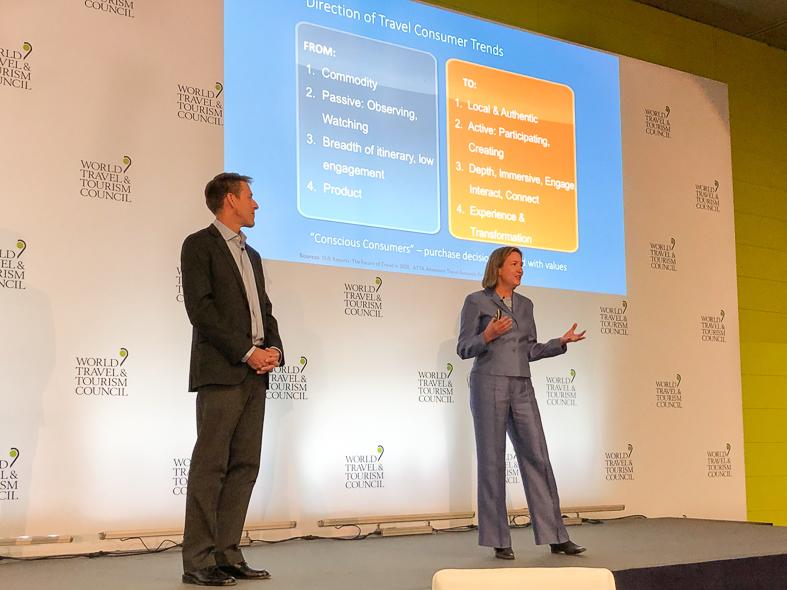
Results-orientation and commercial viability seem to drive your work in sustainable tourism development. Can you talk about this in the context of recent projects?
As senior advisors on a USAID BGI tourism development project in Kyrgyzstan, we were asked to develop and position four regional destinations and DMOs, including developing new local tourism products with the goal of increasing local income and employment. Within one season, we worked with the regional DMOs and local SMEs to create over 20 new adventure, cultural, and culinary tourism products. Within two seasons, this helped boost visitor numbers up by 45%, extended stays to increase the depth of connection, and local revenue from the newly created tours increased by around 75% across the destinations.
Most recently in the Alay region of southern Kyrgyzstan, we have worked with Helvetas and the local CBT provider (Visit Alay) to help develop tourism in a remote region that is considered “offbeat” even for Kyrgyzstan. Our role included a regional marketing strategy combined with conceptualising, testing, packaging, positioning, and marketing adventure tourism products that feature the beauty of the Pamir-Alay Mountains and the unique nomadic culture of this region.
We know that “build it and they will come” just doesn’t work, no matter how endowed a destination may be. This is particularly true in remote regions that appear difficult to reach, in particular, because there is such limited information available.
So, we worked actively with the local CBT director to not only improve the tours to meet adventure travel and consumer trends, but also on partnerships with OTAs and related travel websites, SEO/content marketing, and packaging.
In the last three years, we’ve seen some inspiring changes. Not only have the visitor numbers increased in the region by almost 60% (3,500 to 5,500), but more importantly the number of tourists booking local tours has doubled. Due to this, the average daily spend has almost tripled ($45 to $120) and more than doubled the number of local people (from 130 to 300) involved in and earning an income from this community-based tourism.
For an area where income opportunities are very limited outside of the coal mines, subsistence farming/shepherding and going to Russia for work, these positive results from the Alay Region’s tourism development really has a strong impact on so many families and local people.
In addition to your consultancy work you still run a successful travel blog. What role has your blog and its community played in informing your work?
Our travel blog and the community around it has been invaluable. It enables us to stay directly connected to and continually engage with travelers – their desires, goals, and experiences – and changing travel trends. This helps ground us and our work. We can see firsthand from our blog posts and social media activity what works and gets traction from advocacy, marketing, and even conversion perspective. Even more importantly, we can see what doesn’t work.
We also have used our blog to help train our clients as to what destination strategy, positioning, and product development we’ve advised and trained on, it could look like “in action” when marketing to and connecting with prospective travelers.
For example, the Experiential Travel Guide for Karakol, Kyrgyzstan illustrated the destination positioning we’d proposed and brought to life through the cultural and culinary tourism products we’d worked on into something that travelers could connect with, engage and eventually book.
After we’d published this, the DMO and local community members we spoke to said that our guide made real what we’d spoken of during our capacity building and training exercises. Not only that, but it also helped them to see how their destination and their culture could be proudly shared with engaging prospective travelers.
Finally, we love our community. We want to continue sharing stories from around the world that inspire travelers to travel more sustainably, to places they may not otherwise have considered, and to connect with local people in impactful and meaningful ways.
What can sustainable tourism brands and destinations do to share their efforts more effectively with travellers?
First and foremost, eliminate the jargon. From there, focus on how sustainable tourism experience does two things:
- connects travellers more deeply to what they desire, like interactions with local people, cultures, nature, and destinations
- how the structure and economics of these meaningful travel experiences deliver benefits and positive impact on local communities and their environments.
We believe the two are linked, but it isn’t always communicated to prospective travellers.
Sustainable tourism brands, including those with sustainability certification, should be transparent about their sustainability journey, that they are always working to improve and to optimize their impact. Bring the traveller along on this journey and be sure to illustrate the important role they play. And don’t be afraid to talk about the difficulties.
The journey is long, evolving, and ever-changing.
What do you think will be the role of niche bloggers and social media influencers in travel and tourism, following the coronavirus pandemic? Do you think that we will see a change from quantity to quality?
I hope that niche bloggers and social media influencers will use their platforms for awareness, education, and advocacy. In other words, for “good.” This means sharing stories and information that help their audiences travel with more care, so they better understand the impact – good and bad – of their travel decisions and how they spend their money.
I believe there will be a focus on supporting local businesses in the travel recovery process. Bloggers and influencers can play a role in helping raise awareness of small businesses and their importance.
Ironically, many of the same things we advised travel bloggers and influencers to help combat overtourism also apply for how they can help the travel industry recover from the pandemic in a healthy and responsible way.
I always hope there will be a shift towards more quality content vs quantity.
Not all bloggers and social media influencers will survive the economic impact of the coronavirus pandemic. It remains possible that, as travellers become more discerning and careful about their travels post-COVID-19 crisis, they will seek out more authentic and quality content to inspire them and help them make travel decisions.
Any thoughts on how the COVID-19 crisis will impact or change sustainable tourism?
This remains to be seen.
We’re cautiously optimistic that the sustainable tourism movement can gain a foothold amidst the “Great Reset”. Destinations and travel companies have a unique opportunity to rebuild a better-managed tourism industry that minds the environment and serves the local community just as it tends to the needs of travellers. Travelers, too, have an opportunity as never before to make choices according to their values.
We are not naïve, however. There are myriad forces working against this vision, including an economic fallout greater than our current imagination, the temptation of destinations and companies to recoup losses by seeking volume and quantity over quality, and the inclinations of some travellers to tick off bucket list items at any cost.
In this respect, today’s moment is as every moment has been in the history of travel: of challenges and opportunities in the face of competing for short- and long-term views.
Thank you, Audrey.
Connect with Audrey Scott on LinkedIn and with her partner, Daniel Noll here. Follow Uncornered Market on Facebook, Twitter, and Instagram.
Enjoyed our interview with Audrey Scott on sustainable tourism development strategies and the role of social media influencers in the aftermath of the coronavirus pandemic? Thanks for sharing!

